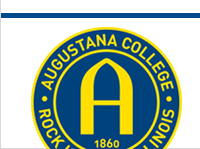Course
BIOL-375: Molecular Genetics
Document Type
Student Paper
Publication Date
2019
Disciplines
Bioinformatics | Biology | Computational Biology | Genomics | Molecular Genetics
Description, Abstract, or Artist's Statement
This project is part of the Meiothermus ruber genome analysis project, which uses a collection of online bioinformatics tools to predict gene function. We investigated the biological functions of two genes: mrub_3020 and mrub_1489. We make two hypotheses in this investigation: a) mrub_3020 is orthologous to the gene b2761 in E. coli K12 MG1655 (a.k.a. casC); b) mrub_1489 is a paralog of mrub_3020. We also predict that the two genes encode unique proteins: mrub_3020 with DNA coordinates 3060491…3063190 encodes a CRISPR – associated helicase (Cas3) that supports the Cascade complex of the CRISPR – Cas adaptive immune system by destroying the invading viral DNA; mrub_1489 with DNA coordinates 1516312 …1519548 encodes a metal-dependent phosphohydrolase that serves as a helicase and is part of the CRISPR – Cas system. Our hypotheses are supported by data obtained from different bioinformatics tools. Tools like EcoCyc and GenBank® confirmed that both E. coli cas3 and mrub_3020 genes are orthologs, and they serve as helicases in their respective CRISPR/Cas systems. Additionally, essential evidences like the adjacent positioning of the mrub_3020 and mrub_1489 genes to Type 1 CRISPR – Cas operon show that these genes are paralogs. Mrub_3020 and mrub_1489 are shown to encode proteins that are involved in the CRISPR/Cas system and they are helicases. The phylogenetic tree generated to assess the evolutionary relationship between mrub_3020 and mrub_1489 shows that the former gene shares a branch with other species, while the latter gene seems to be distantly related to other species.
Augustana Digital Commons Citation
Dei-Ampeh, Alfred and Scott, Dr. Lori. "Mrub_3020, a paralog of mrub_1489, is orthologous to E. coli casC (locus tag b2761)" (2019). Meiothermus ruber Genome Analysis Project.
https://digitalcommons.augustana.edu/biolmruber/47
Included in
Bioinformatics Commons, Biology Commons, Computational Biology Commons, Genomics Commons, Molecular Genetics Commons
